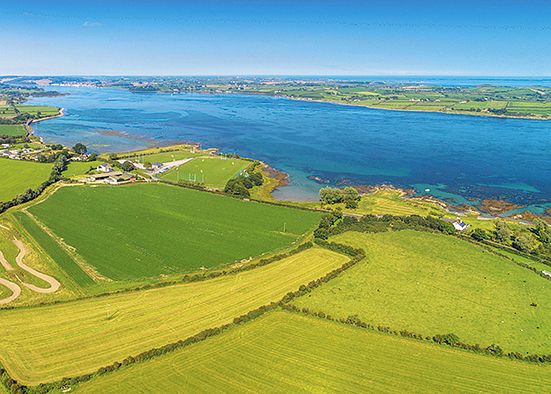Plans to dam Strangford Lough abandoned after opposition to scheme
Plans to dam Strangford Lough abandoned after opposition to scheme
8 January 2025

DECLASSIFIED government files from over 60 years ago have revealed plans to dam Strangford Lough to create a smaller freshwater lake.
The files, which can be found at the Public Record Office in Belfast, disclose how in July 1959 North Down Rural District Council requested
Stormont’s backing in a scheme to dam the lough, headed by local County Surveyor, CA Craig.
Responsible for improving transport links between the Ards peninsula and south east Down, Mr Craig was against implementing a ferry service in the lough, dismissing it as “never a very satisfactory form of transport”.
The surveyor also abandoned the idea of a bridge in the lough, as it was estimated that the cost would be £1 million – £20 million today.
Instead, Mr Craig gave thought to a barrage with lock and flood gates to allow small vessels to pass, which he believed “merit[ed] careful consideration”.
Illustrating using a map, he identified two possible locations for the barrage. One location was just north of Strangford while the other was south of the village, with Mr Craig favouring the northern choice.
He believed that a 44 feet-wide embankment would cost approximately £400,000 – the equivalent of £7.9 million today. Moreover, the total cost of the scheme could be as high as £750,000 – £14.8 million today.
The surveyor predicted that the scheme would create around 5,000 acres of new land by maintaining the lough at about half its natural level.
Mr Craig thought the scheme would make the lough more attractive to tourists by removing its mud flats, and envisaged Strangford becoming a better saltwater port without the dangerous tides and Portaferry straddling the barrier and so having a salt and fresh water port on either side.
He also suggested that it would be beneficial for heavy industry to move into the area if the lough provided sufficient fresh water.
He said: “A large factory or atomic power station in the Ards peninsula, for example, might draw fresh water from the lough and discharge waste to the open sea.”
The plan would also involve the building of a new airport on the newly created land at the top of the Ards peninsula, just south of Newtownards.
Although Mr Craig believed “these benefits should ensure widespread support”, he admitted the possibility that “such an extensive scheme would meet with determined opposition”.
And opposition there was.
The Government Chief Whip and future Prime Minister of Northern Ireland, Brian Faulkner, voiced his concerns in a private letter to Lord Glentoran, Minister of Commerce.
He wrote: “I do not like the idea of the suggested barrage, but have been careful not to express my views.”
The following month however, Mr Faulkner went public with his opposition to the proposed plans on grounds of cost and spoiling tourism.
Farmers were also critical of the plans, arguing that the lack of saltwater in the lough would severely crop growth and without the sea cleansing the lough each day, sewage from towns along the shore would turn it into a “vast cesspool” which would be “utterly repulsive”.
Learning of the dire environmental implications, Mr Craig said he was willing to the barrage scheme.
By October 1959, the issue had been discussed by both the Cabinet at Stormont and a meeting of senior civil servants, which concluded that specialist advice was required on several aspects of the proposed plans.
A minute of the meeting revealed that even in the unlikely event that the lough eventually became a freshwater lake, “there was no demand in this area for industrial or domestic water supplies”.
The barrage scheme ultimately never came to fruition, but there were various references in the file over the next few years to both Craig’s earlier propositions of implementing a bridge or ferry service, with a Stormont memo stating that a ferry was the “only practicable short-term answer”.
In 1969, Down County Council began operation of a publicly-subsidised ferry between Strangford and Portaferry, a service which – as locals will know – operates to this day.


